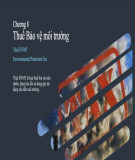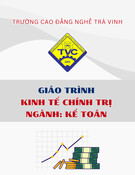
http://www.iaeme.com/IJM/index.asp 36 editor@iaeme.com
International Journal of Management (IJM)
Volume 10, Issue 3, May-June 2019, pp. 36-43, Article ID: IJM_10_03_004
Available online at http://www.iaeme.com/ijm/issues.asp?JType=IJM&VType=10&IType=3
Journal Impact Factor (2019): 9.6780 (Calculated by GISI) www.jifactor.com
ISSN Print: 0976-6502 and ISSN Online: 0976-6510
© IAEME Publication
INDIAN TAX STRUCTURE – AN ANALYTICAL
PERSPECTIVE
Dr. S. M. ALAGAPPAN, Ph.D
Associate professor in Commerce, Arumugam Pillai Seethai Ammal College
Tiruppattur, Sivagangai District – 630211, India
ABSTRACT
Tax payment is mandatory for every citizen of the country. Taxation is an
instrumental tool to procure resources for the government to enable it to formulate
policy schemes for the overall development of the economy. Income tax plays an
important role as a source of revenue and an effective measure of removal of economic
disparity. Different objectives of taxation, each one of them desirable by itself, can pull
in different directions. The state should formulate a comprehensive and cohesive tax
system which can balance the different objectives in view of its own requirements and
goals. The present paper is an attempt to study the present tax structure in India and
the recent reforms undertaken.
Keywords: Direct taxes, Indirect taxes, tax collections, revenue, savings, economy.
Cite this Article: Dr. S. M. Alagappan, Ph.D, Indian Tax Structure – An Analytical
Perspective, International Journal of Management, 10 (3), 2019, pp. 36-43.
http://www.iaeme.com/IJM/issues.asp?JType=IJM&VType=10&IType=3
1. INTRODUCTION
Indian tax system has been unorganised, unregulated and unplanned due to historical reasons.
India’s alien rulers taxed the people to the benefit of their coffers and also for Royal luxuries
of the state. Land revenue was the major part of income for the royal treasury. Other taxes used
to be levied on adhoc basis. During the British rule, no effort was made for uniformity in the
tax system. Vast differences were there between the tax policies of the native kings and the
British provinces. Social justice, social welfare and economic development were not linked to
tax system in anyway. After Independence, each and every aspect of Indian Tax System was
studied thoroughly and all possible attempts were made to make the system equitable, just and
economic, besides yielding adequate revenue to finance the administration and also cater to the
needs of economic development.
The Indian constitution came into effect from 26th January 1950. It is federal in structure.
Clear distinction is made between sources of revenues of union and states in which the residual
power belongs to the centre. The constitution is supreme in India and it is the source for all
laws. Union and states derive the power to levy and collect tax from the constitution. If any rule
or law of the government is not according to constitution, it becomes illegal and void.
According to Taxation Enquiry Commission, the division of tax powers and distribution of
revenue resources between the centre and states can be termed as the ‘Tax System’.

Indian Tax Structure – An Analytical Perspective
http://www.iaeme.com/IJM/index.asp 37 editor@iaeme.com
2. REVIEW OF LITERATURE
Nishant Gauge and Katdare (2015)1 in the article, “Indian Tax Structure – An Analytical
Perspective” identified the amount of revenue collected from different types of taxes over the
period of 4 years. His study found that the amount collected from indirect taxes is nearly twice
the amount collected from direct taxes. His study suggested that government should focus on
structural reforms than policy reforms.
Sherline T.I (2016) ) 2 in the research paper, “ Indian Tax Structure and Relevance of GST”
analysed the basic tax structure in India and the relevance of GST. This paper revealed that
cascading tax revenues have differential impact on firms in the economy with relatively high
burden on those not getting full offsets.
Pramod Kumar Pandey (2017) 3 conducted a study titled, “The Impact of Indian Taxation
system on its Economic Growth” to evaluate the impact of both direct and indirect taxes on
economic growth of India. The study reveals that there is lack of coordination between the
Central board of direct taxes and Central board of Excise and Customs and thus it is highly
needed that these two departments must be consolidated into one.
Note
1. Nishant Gauge and Katdare, “Indian Tax Structure – An Analytical Perspective”,
International Journal in Management and Social Science”, ISSN: 2321-1784, Vol.03, Issue 09,
Sep.2015
2. Sherline T.I, “Indian Tax Structure and Relevance of GST”, International Journal of
Commerce, Business and Management< ISSN: 2319-2828, Vol.5, No.6, Nov-Dec 2016.
3. Pramod Kumar Pandey, “The Impact of Indian Taxation system on its Economic
Growth”, Scientific Society of Advanced Research and Social Change, ISSN 2349-6975, Vol.3,
Issue 1, January-June 2017.
3. NEED OF THE STUDY
All the modern states in the post second world war era have realised that taxation is a powerful
instrument with multiple applications. It can be used to reduce inequalities, to accelerate
economic development, as a tool to regulate compensation, imports and exports, in addition to
its basic objective of raising revenues. India offers a well-structured tax system for its
population. Taxes are the largest source of income for the government. This money is deployed
for various purposes and projects for the development of the nation. Indian taxation system has
undergone tremendous reforms during the last decade. The tax rates have been rationalised and
tax laws have been simplified resulting in better compliance, ease of tax payment and better
enforcement. As taxation structure plays an important role in country’s development, there is
always need for study of the taxation structure to make the taxation structure more simple than
earlier.
4. STATEMENT OF THE PROBLEM
As early as 1917, Prof.Seligman remarked, “the tax reform is every where in air’. In India also,
the need for reforming tax system was realised early and a number of committees were
appointed at various times to examine different aspects of taxation. GST has brought in a
structural change in the indirect tax system in India. What is needed now is a similar reform on
the direct tax front. Many problems like multiplicity of taxes, dominance of indirect taxes,
adhocism, bias in incidence of taxes, complexity and corruption, imbalance in tax system, lack
of coordination, lack of built-in-elasticity, squandering away of resources, administrative
inefficiency and corruption show that Indian taxation system requires some major reforms in
the future ahead, addressing all these problems.

Dr. S. M. Alagappan, Ph.D
http://www.iaeme.com/IJM/index.asp 38 editor@iaeme.com
4.1. OBJECTIVES
To study the tax structure in India
To identify the amount of revenue collected from different types of taxes
To analyse the revenues from taxable sources and non taxable sources
To identify the amount spent for tax collection
5. RESEARCH METHODOLOGY
This study is purely based on secondary data. Various figures are obtained from the different
websites of Government of India. Other secondary sources include text books, journals, on-line
published articles, information from the local newspapers and internet search engines,
unpublished articles.
5.1. CLASSIFICATION OF TAXES
The tax structure in India is divided into direct and indirect taxes. Direct taxes are levied on
taxable income earned by individuals and corporate entities, the burden to deposit taxes is on
the assesses themselves. On the other hand, indirect taxes are levied on the sale and provision
of goods and services respectively and the burden to collect and deposit taxes is on the sellers
instead of the assesses directly.
Some of the direct taxes prevailing in India:
Income tax
Corporation tax
Dividend tax
Capital gains tax
Wealth tax
Gift tax
Estate duty or Inheritance tax
Land revenue
Agricultural Income tax
Professional tax
Some of the indirect taxes prevailing in India:
GST is an Indirect Tax which has replaced many Indirect Taxes in India. The Goods and
Service Tax Act was passed in the Parliament on 29th March 2017. The Act came into effect
on 1st July 2017; Goods & Services Tax Law in India is a comprehensive, multi-stage,
destination-based tax that is levied on every value addition.
Indirect taxes which are not included in GST:
Basic Customs duty
Exports duty
Road & Passenger tax
Property tax
Stamp duty
Electricity duty

Indian Tax Structure – An Analytical Perspective
http://www.iaeme.com/IJM/index.asp 39 editor@iaeme.com
5.2. DIFFERENCES BETWEEN DIRECT TAX AND INDIRECT TAX
Incidence of direct tax is directly on the taxpayer. Incidence of indirect tax is on traders
or manufacturers, but shifted to buyers of goods or services later on.
Shifting of burden is not easy in case of direct taxes and tax payer has to bear the tax.
The indirect tax can be shifted to other individuals.
In case of direct taxes, scope for evasion is high through falsification of accounts and
suppression of income. Scope for tax evasion is low in case of indirect taxes, as the tax
forms part of product or service price.
Direct tax may reduce inflation, whereas indirect tax may enhance inflation.
Direct taxes adversely affect the taxpayers’ ability to save and invest. In case of indirect
taxes, savings and investment may be increased due to reduction in the usage of non
essential goods or services.
Direct taxes are progressive taxes which reduce inequalities, whereas indirect taxes are
regressive taxes which enhance inequalities.
In case of indirect taxes, by heavily taxing harmful articles such as cigarettes, liquors
etc., the government can divert the purchasing power of people towards the useful
articles and thereby create beneficial consumption pattern.
Direct taxes are usually complex with a lot of exemptions, procedures and provisions
which may necessitate assistance of professional accountants and auditors involving
higher administrative costs, whereas indirect taxes involve lesser administrative costs
due to convenient and stable collections.
Indirect taxes have a wider coverage as all members of the society are taxed through the
sale of goods and services, while direct taxes are collected only from people in
respective tax brackets.
Indirect taxes allow the government to expect stable and assured returns and brings into its
fold almost every member of the society – something which the direct tax has been unable to
do. But, both direct and indirect taxes are important for the country as they are intricately linked
with the overall economy. As such, collection of these taxes is important for the government as
well as the well-being of the country.
5.3. ANALYSIS OF INDIAN TAX STRUCTURE
Following table no.1 shows the details of the amount raised from direct taxes and indirect taxes
by both central and state governments.
Table 1 REVENUE RECEIPTS in Rs.crore
2013-14
2014-15
2015-16
2016-17
Revenue receipts –
Direct tax
648966
703508
763454
862077
Revenue receipts –
Indirect tax
1230177
1336518
1620967
1822307
Source: Public finance statistics, Ministry of Finance, 2016-17

Dr. S. M. Alagappan, Ph.D
http://www.iaeme.com/IJM/index.asp 40 editor@iaeme.com
Figure 1
Interpretations:
From the above graph, it is seen that the amount of revenue received from indirect taxes is
almost double the revenue received from direct taxes. Hence it can be observed that there is
more dependence on indirect taxes for revenue collection.
Table 2 PROPORTION OF DIFFERENT DIRECT TAXES FOR THE YEAR 2016-17
Name of Direct Tax
Amount collected
(Rs. Crore)
Percentage share in total
direct tax (%)
Corporation tax
493924
57.30
Taxes on income
345776
40.11
Estate duty
0
0
Interest tax
0
0
Wealth tax
0
0
Gift tax
0
0
Land revenue
14090
1.63
Agricultural tax
116
0.01
Hotel receipts tax
89
0.01
Expenditure tax
0
0
Others*
8083
0.94
* includes taxes on professions, trades, employment and non-urban immovable properties etc.
Source: Public finance statistics, Ministry of Finance, 2016-17
Figure 2
proportion of different direct taxes during 2016-17
corporation tax taxes on income all other sources


























